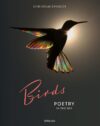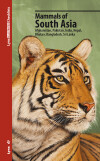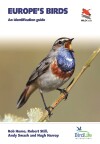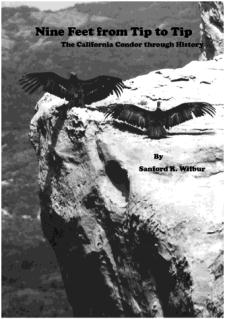 Nine Feet from Tip to Tip: The California Condor Through History
Nine Feet from Tip to Tip: The California Condor Through History
by Sanford R. Wilbur
From the publisher:
In 1941, Harry Harris published “The Annals of Gymnogyps to 1900″ [Condor 43(1):3-55, January 1941], a bibliographic survey of what was then known of the early history of the California condor. Even after publication in 1953 of Carl Koford’s epic work on the biology of condors, Harris’ review remained by far the most complete and most authoritative document concerning the relationships between humans and one of the world’s rarest species. Now, seventy years later, an updated and expanded version of “the Annals” is available.
Beginning in 1970, while conducting field research on the last remaining wild California condors, Sanford “Sandy” Wilbur began compiling historical information on the species. In the next 40 years – combining his research skills and interests in history and biology – he located nearly 2,000 written references to condors. Included were books, journal and magazine articles, newspaper items, diaries, field notes, manuscripts, museum data, and historic correspondence. Supplementing these references, he reviewed nearly 1,000 additional items covering such topics as Pacific Coast history, biography, ethnology, paleontology, agriculture and livestock, chemical pesticides, and local faunas and floras. Following Harry Harris’ lead, he has woven all this material into a new “annals of Gymnogyps” – supplemented, corrected, and continued from 1900 to the mid-1980s, when the last of the wild condors were taken into captivity.
“Nine Feet” will certainly be of interest to condor enthusiasts, but it is much more than another “condor book.” Featuring a previously little-known cast of characters – adventurers, hunters, specimen salesmen, private collectors, and museum curators – it is also a narrative of people, places, and events in the growth and development of the western United States.
This is the story of the condor’s relationship with man from prehistory to the mid-1980’s. The publisher’s assertion that this book “will certainly be of interest to condor enthusiasts” is obvious. But will it hold the interest of other birders? I can’t answer that one yet. But after looking over the chapter summaries, I’m intrigued.
Nine Feet from Tip to Tip: The California Condor Through History
by Sanford R. Wilbur
Paperback; 363 pages
Symbios Books; 2012
ISBN: 978-0-9651263-4-2
$18.95
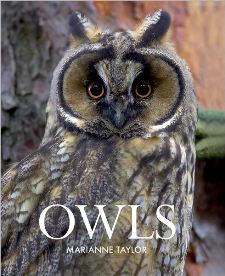 Owls
Owls
by Marianne Taylor
From Cornell University Press:
From tiny Elf and Pygmy Owls through the familiar Tawny and Barn Owls to the giant Eagle and Fish Owls, these fierce hunters of dawn, dusk and night have long held a fascination for people around the world. This informative book, covering all owl species found in the northern hemisphere, looks closely at how owls live their lives, and how best to recognize them.
The first part of the book looks in detail at owl biology: how they live, how they breed, and how they feed. The second part includes species accounts for all 47 species of owls that occur in the northern hemisphere, with emphasis on those of Europe and North America. The book is richly illustrated with sensational, full-color photographs of these compelling birds.
The owl family, already well represented by books, gets another entry. The main difference from previous books (such as Owls of North America) is that this one includes species accounts for all the owls of North America, Europe, and most of Asia (the Holarctic region). And it is liberally illustrated with some very nice photographs. Still, that’s not enough to recommend it to those who already have one or more similar owl books. But for those who don’t, this would be a good addition to your library.
Owls
by Marianne Taylor
Hardcover; 224 pages
Comstock Publishing Associates (Cornell University Press); November 6, 2012
ISBN: 978-0801451812
$35.00
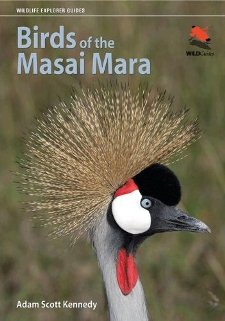 Birds of the Masai Mara
Birds of the Masai Mara
by Adam Scott Kennedy
From Princeton University Press:
Birds of the Masai Mara is a remarkably beautiful photographic guide featuring the bird species likely to be encountered by visitors to the popular Masai Mara National Reserve in Kenya. With an eye-catching layout, easy-to-use format, and no-jargon approach, the book contains more than 300 stunning photographs covering over 200 species of birds and is accessible and informative, rather than purely identification-based. A handy, brief introduction provides visitors with background on the habitats of the national park, and the guide’s habitat-based approach makes it simple to identify any bird species according to where it is found. Based on the firsthand experiences of the author, Birds of the Masai Mara is an ideal companion to all those visiting the national reserve and to bird aficionados interested in learning more about the region.
- The only photographic guide to focus solely on the bird species of the Masai Mara National Reserve
- More than 300 remarkable photographs covering over 200 species
- Accessible text explores bird species behavior and species etymology
- A brief and handy introduction examines the habitats of the Masai Mara
- Easy-to-use habitat-based layout makes exciting birdwatching easy
Designed to be understandable and easy to use, this is a great guide for anyone visiting the Masai Mara in Kenya. Serious birders will also want a more detailed field guide, but I’d definitely take this book with me as well. And don’t forget the companion guide, Animals of the Masai Mara , which covers 65 mammal and 17 reptile species.
, which covers 65 mammal and 17 reptile species.
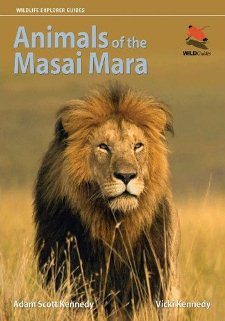

Birds of the Masai Mara
by Adam Scott Kennedy
Paperback; 176 pages
Princeton University Press; November 4, 2012
ISBN: 978-0691155944
$27.95
Animals of the Masai Mara
by Adam Scott Kennedy and Vicki Kennedy
Paperback; 152 pages
Princeton University Press; November 4, 2012
ISBN: 978-0691156019
$27.95
 National Geographic Birds: Field Guide to North America
National Geographic Birds: Field Guide to North America
Update [11/27/2018]: This app is no longer available for purchase and will not work with the latest versions of Apple operating systems.
National Geographic Handheld Birds was one of the first field guide apps for the iPhone. But, from all accounts, it didn’t work well since it was a direct port from another platform. But now they’ve completely redesigned it to work with the iPhone/iPad/iPod Touch, and updated the content as well. Here’s the description from National Geographic:
National Geographic Birds is a one-stop resource for any bird enthusiast. With more than 995 species and 3,000 gorgeous illustrations of birds of North America, this app is the most comprehensive birding guide on the market. Available for iPhone and iPod touch.
From its detailed illustrations to its easy-to-use interface, this app makes spotting, identifying, and understanding birds easier than ever before.
- Check out 995 species—more than any other app—accompanied by gorgeous full-color illustrations and field-mark annotations
- Find birds in each season with more than 800 up-to-date range maps
- Quickly and easily locate species of interest with our robust search/sort/filter functionality with real-time results
- Track all of your sightings in the My Journal section by adding location details, weather descriptions, photos, notes, and more
- Start your own life list and peruse numerous lists compiled by National Geographic, including longest-distant migrants, endangered species, and species most likely to be spotted in regional hot-spots such as Cape Hattaras and Madera Canyon
- Test your birding knowledge and increase your identification skills, with custom-created quizzes, curated by the experts at National Geographic
- Learn about birding ethics and must-have gear
- View exclusive videos of bird songs and calls from the field
This app definitely has some great content, including the illustrations and range maps from the latest NatGeo print guide (sixth edition), plus many new things such as sounds, quizzes, lists, and more. It’s definitely worth the current $9.99 price, especially for those who favor the National Geographic guide. (Be on the lookout for some more details on this app in my updated iPhone Field Guide Comparison, coming soon.)
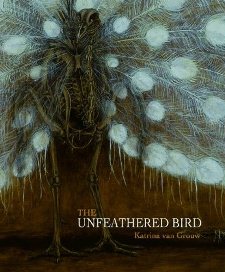 The Unfeathered Bird
The Unfeathered Bird
by Katrina van Grouw
From Princeton University Press:
There is more to a bird than simply feathers. And just because birds evolved from a single flying ancestor doesn’t mean they are structurally all the same. With over 385 stunning drawings depicting 200 species, The Unfeathered Bird is a richly illustrated book on bird anatomy that offers refreshingly original insights into what goes on beneath the feathered surface. Each exquisite drawing is made from an actual specimen and reproduced in sumptuous large format. The birds are shown in lifelike positions and engaged in behavior typical of the species: an underwater view of the skeleton of a swimming loon, the musculature of a porpoising penguin, and an unfeathered sparrowhawk plucking its prey. Jargon-free and easily accessible to any reader, the lively text relates birds’ anatomy to their lifestyle and evolution, examining such questions as why penguins are bigger than auks, whether harrier hawks really have double-jointed legs, and the difference between wing claws and wing spurs. A landmark in popular bird books, The Unfeathered Bird is a must for anyone who appreciates birds or bird art.
- A unique book that bridges art, science, and history
- Over 385 beautiful drawings, artistically arranged in a sumptuous large-format book
- Accessible, jargon-free text–the only book on bird anatomy aimed at the general reader
- Drawings and text all based on actual bird specimens
- Includes most anatomically distinct bird groups
- Many species never illustrated before
The Unfeathered Bird is surprisingly beautiful and informative. And one of the most unique bird books that I’ve ever seen.
The Unfeathered Bird
by Katrina van Grouw
Hardcover; 300 pages
Princeton University Press; November 25, 2012
ISBN: 978-0691151342
$49.95
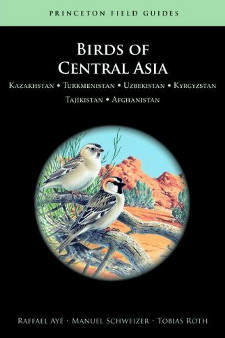 Birds of Central Asia: Kazakhstan, Turkmenistan, Uzbekistan, Kyrgyzstan, Tajikistan, Afghanistan
Birds of Central Asia: Kazakhstan, Turkmenistan, Uzbekistan, Kyrgyzstan, Tajikistan, Afghanistan
by Raffael Ayé, Manuel Schweizer, and Tobias Roth
From Princeton University Press:
Central Asia–a vast and remote area of steppe, semi-desert, and mountains separating Europe from eastern Asia–is home to a diversity of birds. Birds of Central Asia is the first-ever field guide to the avian population of this fascinating part of the world. From ground jays, larks, and raptors to warblers, nuthatches, and snowfinches, this comprehensive guide covers 618 species–including all residents, migrants, and vagrants–and 143 superb plates depict every species and many distinct plumages and races. This portable book contains important introductory sections on the land and its birds, and up-to-date color maps. The concise, authoritative text on facing pages highlights key identification features, such as status, voice, and habitat. Birds of Central Asia is indispensable for anyone interested in the birds of this remarkable and little-known region.
- First-ever field guide to the birds of Kazakhstan, Turkmenistan, Uzbekistan, Kyrgyzstan, Tajikistan, and Afghanistan
- Covers 618 species, including all residents, migrants, and vagrants
- 143 superb plates depict every species and many distinct plumages and races
- Authoritative text on facing pages highlights key identification features, including status, voice, and habitat
- Up-to-date color maps for every species
- Important introductory sections introduce the land and its birds
The layout and quality are very similar to the other field guides Princeton has published recently. So you know it’s a must for anyone birding the area!
Birds of Central Asia: Kazakhstan, Turkmenistan, Uzbekistan, Kyrgyzstan, Tajikistan, Afghanistan
by Raffael Ayé, Manuel Schweizer, and Tobias Roth
Paperback; 336 pages
Princeton University Press; October 28, 2012
ISBN: 978-0691153377
$39.50
Check out this Spring 2013 Preview from Princeton University Press.
Of particular interest is a new entry in the Crossley ID Guide series on raptors, as well as The Warbler Guide. From the description, it appears that the latter’s title is intentionally evocative of the groundbreaking The Shorebird Guide, as it “Includes field exercises, flight shots, general identification strategies, and quizzes”. Sounds intriguing.
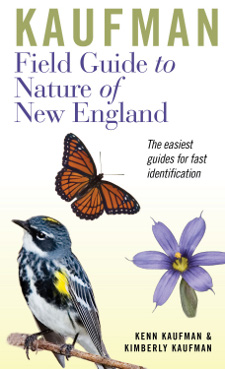 Kaufman Field Guide to Nature of New England
Kaufman Field Guide to Nature of New England
by Kenn Kaufman and Kimberly Kaufman
From Houghton Mifflin Harcourt:
Whether you’re walking in the woods or along the beach, camping, hiking, canoeing, or just enjoying your own backyard, this book will help identify all your nature discoveries. With authoritative and broad coverage, using nontechnical and lively language and more than 2,000 color photographs, this guide is an essential reference for nature lovers living in or visiting New England.
If you’ve ever used one of the other Kaufman field guides, then you know about what to expect here. In other words, an excellent field guide. I can only hope they’ll eventually do one for the Southeast!
Kaufman Field Guide to Nature of New England
by Kenn Kaufman and Kimberly Kaufman
Vinyl Bound; 416 pages
Houghton Mifflin Harcourt; October 16, 2012
ISBN 13: 978-0618456970
$20.00
October 2012 is going to be an amazing month for bird books. I mean, we’re getting not one, but two books on…
Birds of Paradise
Field Guides
-
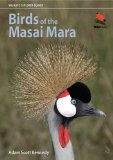 Birds of the Masai Mara
Birds of the Masai Mara
Adam Scott Kennedy
October 28, 2012
A photography-based field guide to the Masai Mara National Reserve in Kenya. And if you’re planning on going, also make sure you get the companion guide Animals of the Masai Mara .
.
-
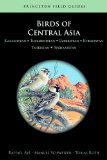 Birds of Central Asia: Kazakhstan, Turkmenistan, Uzbekistan, Kyrgyzstan, Tajikistan, Afghanistan
Birds of Central Asia: Kazakhstan, Turkmenistan, Uzbekistan, Kyrgyzstan, Tajikistan, Afghanistan
Raffael Ayé, Manuel Schweizer, and Tobias Roth
October 28, 2012
This guide is obviously very good news for anyone heading to Central Asia.
-
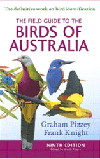 The Field Guide to the Birds of Australia, Ninth edition
The Field Guide to the Birds of Australia, Ninth edition
Graham Pizzey and Frank Knight
October 1, 2012
This venerable field guide has been updated and expanded.
Other Books
 Nine Feet from Tip to Tip: The California Condor Through History
Nine Feet from Tip to Tip: The California Condor Through History

 Owls
Owls Birds of the Masai Mara
Birds of the Masai Mara
 National Geographic Birds: Field Guide to North America
National Geographic Birds: Field Guide to North America
 The Unfeathered Bird
The Unfeathered Bird Birds of Central Asia: Kazakhstan, Turkmenistan, Uzbekistan, Kyrgyzstan, Tajikistan, Afghanistan
Birds of Central Asia: Kazakhstan, Turkmenistan, Uzbekistan, Kyrgyzstan, Tajikistan, Afghanistan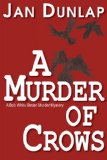
 Kaufman Field Guide to Nature of New England
Kaufman Field Guide to Nature of New England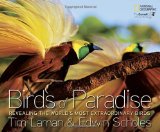 Birds of Paradise: Revealing the World’s Most Extraordinary Birds
Birds of Paradise: Revealing the World’s Most Extraordinary Birds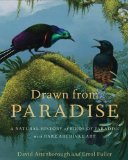 Drawn from Paradise: The Discovery, Art and Natural History of the Birds of Paradise
Drawn from Paradise: The Discovery, Art and Natural History of the Birds of Paradise Birds of the Masai Mara
Birds of the Masai Mara Birds of Central Asia: Kazakhstan, Turkmenistan, Uzbekistan, Kyrgyzstan, Tajikistan, Afghanistan
Birds of Central Asia: Kazakhstan, Turkmenistan, Uzbekistan, Kyrgyzstan, Tajikistan, Afghanistan The Field Guide to the Birds of Australia, Ninth edition
The Field Guide to the Birds of Australia, Ninth edition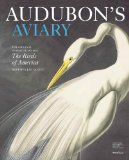 Audubon’s Aviary: The Original Watercolors for The Birds of America
Audubon’s Aviary: The Original Watercolors for The Birds of America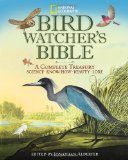 National Geographic Bird-watcher’s Bible: A Complete Treasury
National Geographic Bird-watcher’s Bible: A Complete Treasury Rare Birds: The Extraordinary Tale of the Bermuda Petrel and the Man Who Brought It Back from Extinction
Rare Birds: The Extraordinary Tale of the Bermuda Petrel and the Man Who Brought It Back from Extinction



